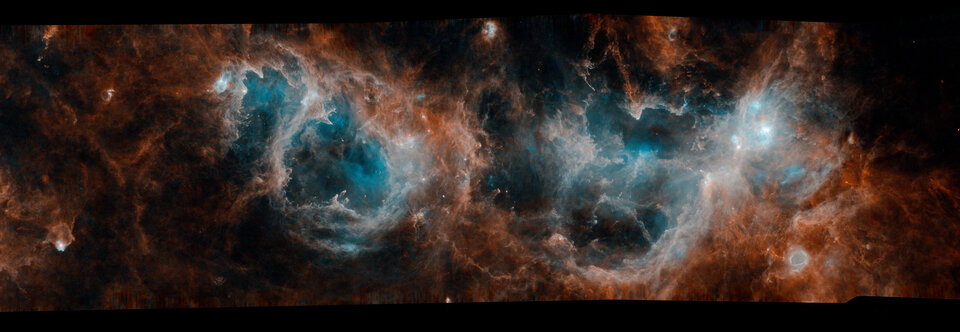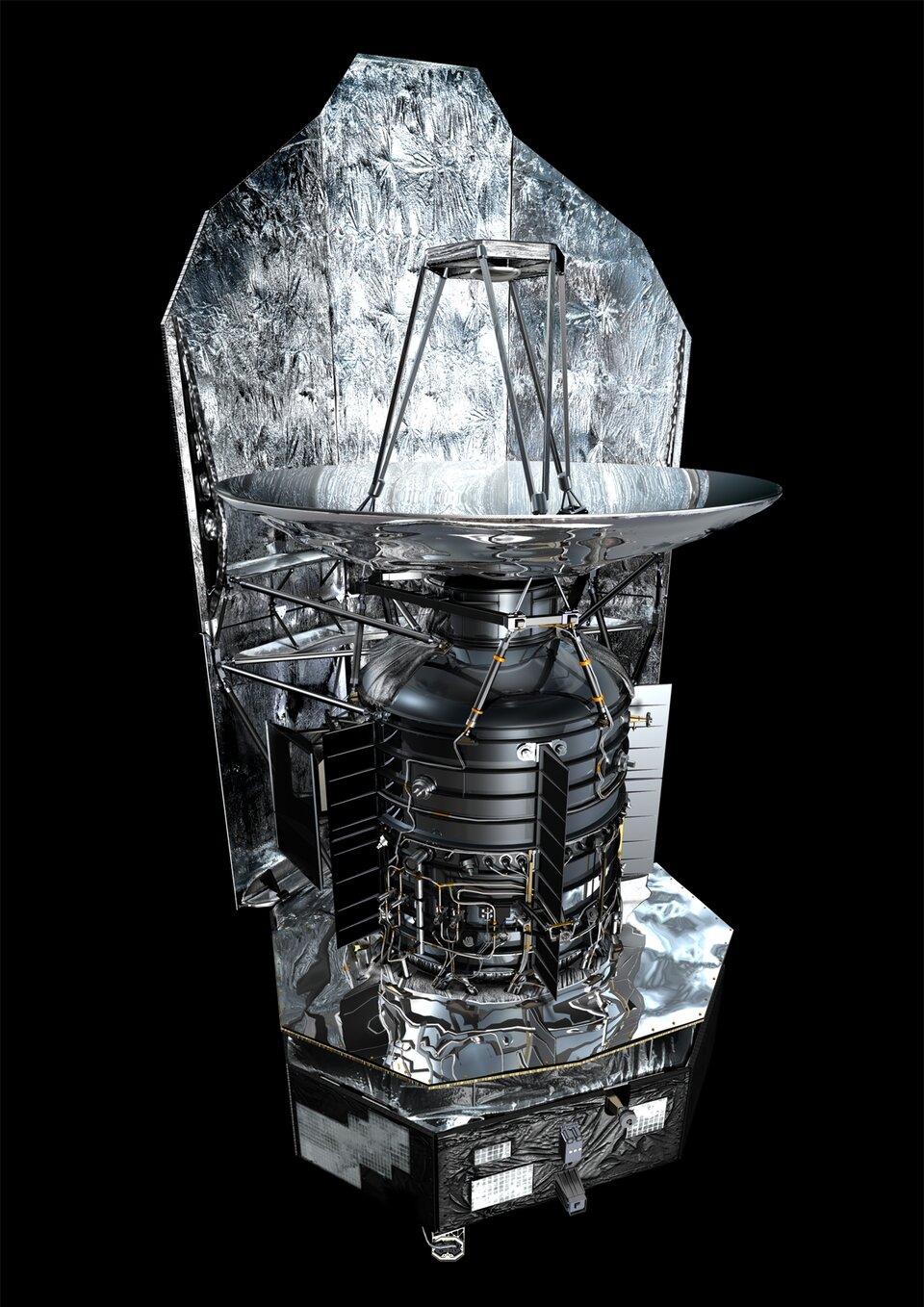How Herschel unlocked the secrets of star formation
Surveying the sky for almost four years to observe the glow of cold cosmic dust embedded in interstellar clouds of gas, the Herschel Space Observatory has provided astronomers with an unprecedented glimpse into the stellar cradles of our Galaxy. As a result, giant strides have been taken in our understanding of the physical processes that lead to the birth of stars and their planetary systems.
Herschel: star formation. Click here for details and large versions of the video. Credit: ESA/Herschel/NASA/JPL-Caltech; acknowledgement: T. Pyle & R. Hurt (JPL-Caltech)

"We are made of star stuff," the astronomer Carl Sagan famously said, as the atoms that make us – our bodies, our homes, our planet – come largely from previous generations of stars.
Indeed, stars and planets are continually born in the densest and coldest pockets of molecular clouds, where they take shape from a mixture that consists largely of gas but also contains small amounts of dust mixed in.
As part of a cosmic recycling process, stars also return their re-processed material after their demise, enriching this interstellar medium that pervades all galaxies, including our Milky Way, with heavy elements produced in their nuclear furnaces and during the violent explosions that end the lives of the most massive stars.
Astronomers have long been aware that stars take shape as interstellar material comes together and condenses, then breaks up into fragments – the seeds of future stars – but many details of this complex process remained unclear until not so long ago.
What turned the tables in the understanding of how stars are born was ESA's Herschel Space Observatory, a trailblazing mission that was launched in 2009 and operated until 2013.
A unique observatory

Making sense of the Universe we live in is a fascinating endeavour forged over thousands of years by the incessant work of countless dedicated early thinkers, philosophers, and more recently, by scientists. This continuous process is punctuated by major discoveries, often made possible by the onset of new instrumentation that opens another window on the world, amplifying or expanding our senses.
Enabling astronomers to observe farther and in greater detail for the past four centuries, the telescope has been key to establishing our physical understanding of the cosmos. Similarly, the progress in astronomical detectors – from the human eye to photographic plates, a couple of hundred years ago, and to a wide variety of electronic devices over the past century – has been just as revolutionary for the development of these investigations.
The discovery of light at wavelengths other than the visible band, in the nineteenth century, and its application to astronomy in the twentieth, have furthered this process, revealing entirely new classes of cosmic sources and phenomena, as well as unexpected aspects of known ones.

